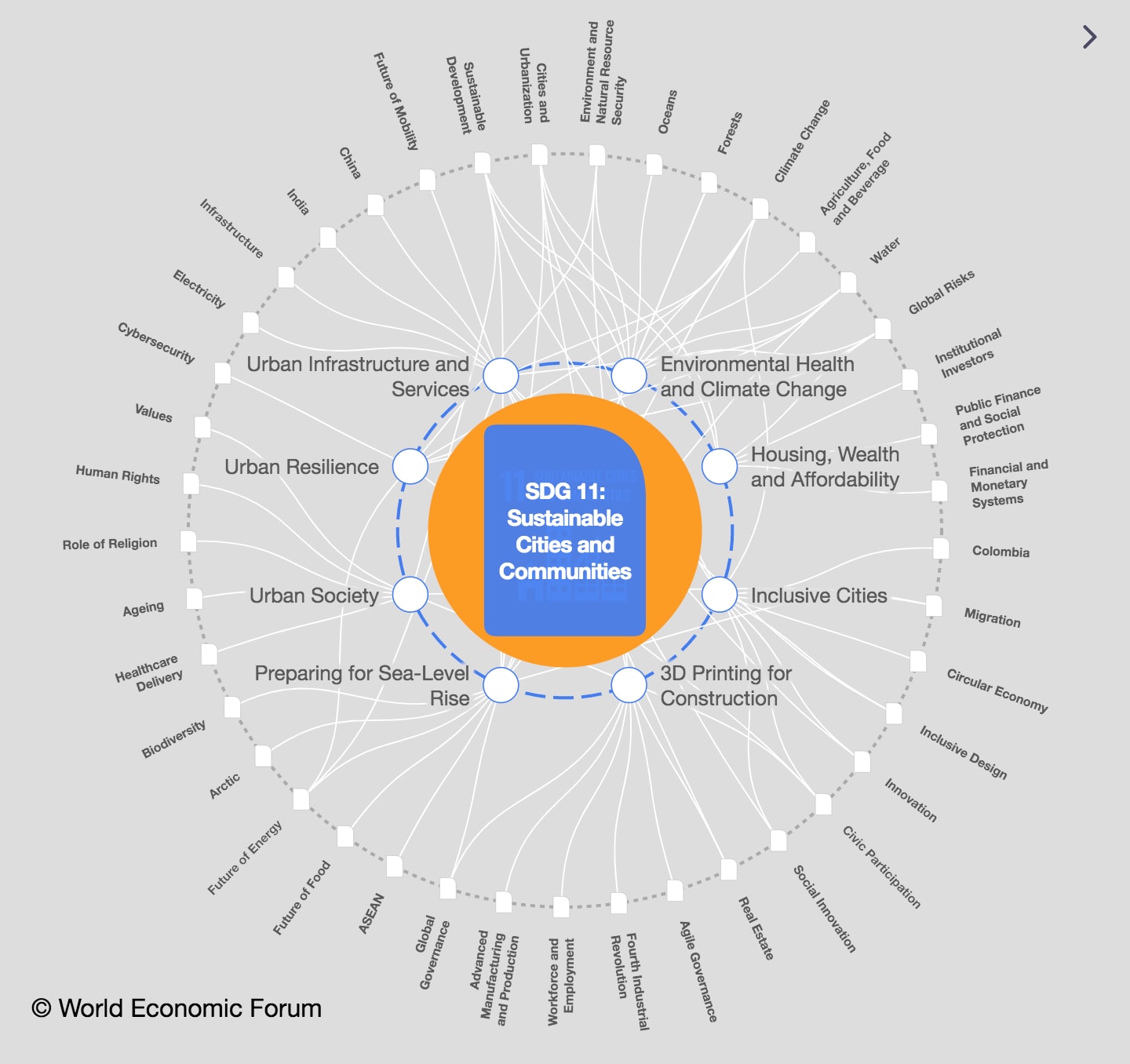How cities can lead the green recovery

Cities have pledged to use their post-pandemic recovery plans to bolster ways to adapt to the growing risks posed by climate change. Image: REUTERS/Zohra Bensemra

Get involved with our crowdsourced digital platform to deliver impact at scale
Stay up to date:
SDG 11: Sustainable Cities and Communities
- Cities are looking at ways that they can improve their climate adaptability whilst responding to the COVID-19 crisis.
- The new 1000 Cities Adapt Now initiative will focus on water resilience and using natural systems to protect urban areas from climate change impacts.
- It will help to drive an inclusive and resilient post-pandemic recovery.
- City leaders at a virtual Climate Adaptation Summit suggested citizens are more open to change following their need to adapt during coronavirus.
Cities across the globe pledged to use their post-pandemic recovery plans to bolster ways to adapt to the growing risks posed by climate change.
The 1000 Cities Adapt Now initiative, launched by several non-governmental organizations and a U.N. agency, will initially start operating in 100 urban areas but eventually expand to 1,000, organizers said at the opening of the two-day virtual Climate Adaptation Summit.
The project was developed amid concern that adaptation had received relatively weaker attention in the international climate discussion, and it will now use the issue to drive an inclusive and resilient post-pandemic recovery, according to a joint statement on the initiative.
"After COVID, we need a green recovery led by cities," said Andy Burnham, mayor of Britain's Manchester, addressing a summit mayors forum.
"Given what we all lived through over the past year, I think people are more open to make change to the way we live, the way we work and the way we move around."
Manchester and other members of the 1000 Cities project pledged to combine these two efforts first to focus "immediate benefits" on the most vulnerable communities, including through job creation.
"All city leaders were urging work on a resilient recovery, to work on an economic recovery but one that includes adaptation, justice and equity," said Arnoud Molenaar, chief resilience officer for Rotterdam.
Amid the coronavirus pandemic, all corners of city life - from home to office, park to pub - are undergoing a reboot, with some cities increasing parkland, others cycle lanes, and flats redesigned to work at home.
The scope of the latest initiative, which was launched in the Dutch port city of Rotterdam, is far broader than the pandemic recovery, too.
Over the coming decade, its work will also prioritize water resilience – how to deal with stormwater, how to prepare for drought – as well as using natural systems to safeguard cities from the effects of climate change, such as reinforcing coastal areas with reefs and mangroves.
But beyond these more traditional safeguards, the pandemic has boosted awareness of the vulnerability of cities to sudden health crises, said Katharine Burgess, vice president of urban resilience at Washington think tank Urban Land Institute.
"It's made it more clear that society needs to be ready for major disruptions," she told the Thomson Reuters Foundation.
Burgess and her colleagues last week co-published a global report on emerging best practices among cities implementing climate-planning measures, and she noted growing evidence of the broader knock-on benefits of city spending on resilience projects.
In southern Florida, highly vulnerable to sea level rise, community-wide schemes offered an average 2-to-1 return on investment, Burgess said, citing impacts on job creation, property preservation, property taxes and more.
Cities are now hoping to use the pandemic's devastation to help officials focus on strengthening their communities for the long term.
"Seventeen million inhabitants in Istanbul currently fear they'll run out of water while coping with the COVID crisis," Mark Watts, executive director of the non profit C40 Cities, told the virtual summit, referring to severe water shortages in Turkey's most populated city.
"The recovery from COVID really builds the foundation for resilience everywhere."
Don't miss any update on this topic
Create a free account and access your personalized content collection with our latest publications and analyses.
License and Republishing
World Economic Forum articles may be republished in accordance with the Creative Commons Attribution-NonCommercial-NoDerivatives 4.0 International Public License, and in accordance with our Terms of Use.
The views expressed in this article are those of the author alone and not the World Economic Forum.
The Agenda Weekly
A weekly update of the most important issues driving the global agenda
You can unsubscribe at any time using the link in our emails. For more details, review our privacy policy.
More on Health and Healthcare SystemsSee all
Shyam Bishen and Annika Green
April 22, 2024
Johnny Wood
April 17, 2024
Adrian Gore
April 15, 2024
Fatemeh Aminpour, Ilan Katz and Jennifer Skattebol
April 15, 2024
Carel du Marchie Sarvaas
April 11, 2024







